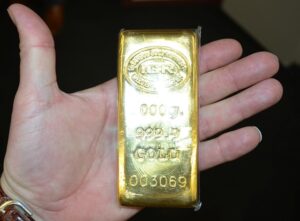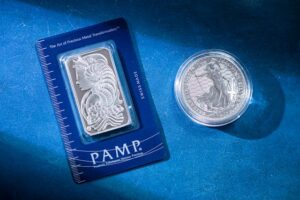
Precious Metals vs. Inflation: Historical Proof Gold Outperforms Cash
05/12/2025
Inflation is like a silent thief, quietly eroding the value of our hard-earned cash. As prices rise and purchasing power dwindles, many investors find themselves searching for a safe haven. In this situation, you’ll love getting precious metals. Gold and silver from Money Metals have long been regarded as reliable stores of value during turbulent times.
The 1970s taught us harsh lessons about inflation and currency devaluation. Fast forward to today, and we’re witnessing similar economic pressures that raise questions about the durability of paper money compared to tangible assets. While some may still cling to their cash reserves, history suggests there’s a wiser route: investing in gold.
1970s vs. 2020s: Gold’s Purchasing Power Then & Now
 But what does this mean for your portfolio? Is it time to rethink how you hedge against inflation? Here’s the recap. The 1970s were a defining decade for gold. Inflation skyrocketed, peaking at nearly 14%. Investors flocked to the yellow metal as their cash lost value. By the end of the decade, gold had surged from around $35 an ounce to more than $800. Fast forward to the 2020s. While we’re not seeing inflation rates quite like those of the ’70s, concerns are rising as prices climb across various sectors.
But what does this mean for your portfolio? Is it time to rethink how you hedge against inflation? Here’s the recap. The 1970s were a defining decade for gold. Inflation skyrocketed, peaking at nearly 14%. Investors flocked to the yellow metal as their cash lost value. By the end of the decade, gold had surged from around $35 an ounce to more than $800. Fast forward to the 2020s. While we’re not seeing inflation rates quite like those of the ’70s, concerns are rising as prices climb across various sectors.
Gold continues to shine amid uncertainty, holding its ground as a hedge against potential currency devaluation. Today’s market dynamics differ significantly; however, one thing remains clear: gold’s purchasing power has historically outperformed cash during turbulent times.
Why Silver Lags During Hyperinflation
Silver often takes a backseat during periods of hyperinflation. While it’s a precious metal, its historical performance pales in comparison to gold when economies struggle. One key reason lies in market perception. Gold is viewed as the ultimate safe haven. Investors flock to it for security and wealth preservation, especially when fiat currencies lose value rapidly. Silver lacks that same allure. It’s seen more as an industrial commodity than a store of value. When inflation spikes, demand for silver’s industrial uses can drop, causing prices to stagnate or even decline. Gold markets are larger and more robust than silver’s. This makes gold easier to trade during turbulent times, further solidifying its status as the go-to asset in crises.
Central Bank Gold Hoarding: What They Know That You Don’t
Central banks worldwide are quietly amassing gold reserves. This trend raises eyebrows and sparks curiosity about their motivations. Historically, central banks have viewed gold as a safeguard during economic uncertainties. In times of crisis, gold has proven to be a reliable asset that retains value when currencies falter. This behavior suggests they anticipate potential inflation or market instability. While most investors hold cash for liquidity, these institutions prefer tangible assets like gold to weather financial storms. Some analysts argue that this hoarding is a signal—an indicator that the global economy may not be as stable as many believe.
How Much Gold to Hedge a $100K Portfolio
 When considering how much gold to include in a $100,000 portfolio, the general guideline often cited is between 5% and 10%. This means allocating roughly $5,000 to $10,000 towards gold investments. This allocation isn’t just about diversification; it’s a strategic move against inflation. Gold has historically held its value better than cash during economic turbulence. The specific percentage can depend on individual risk tolerance and market outlook.
When considering how much gold to include in a $100,000 portfolio, the general guideline often cited is between 5% and 10%. This means allocating roughly $5,000 to $10,000 towards gold investments. This allocation isn’t just about diversification; it’s a strategic move against inflation. Gold has historically held its value better than cash during economic turbulence. The specific percentage can depend on individual risk tolerance and market outlook.
If you expect high inflation or geopolitical instability, leaning closer to that 10% might make sense. Physical gold, like coins or bars, requires storage considerations. Alternatively, ETFs offer easier access without the hassle of safekeeping. Assessing your financial situation and investment goals will guide this decision. Balancing traditional assets with tangible ones like gold can create a more resilient portfolio during uncertain times.



